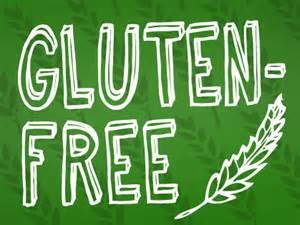Gluten is a protein component found in many grains, including wheat, rye, bran, spelt, oats, barley, plus many more. Gluten is in most breads, pastas, cereals, and crackers
What’s the significance of gluten?
Studies show that 1 in 258 people may have celiac disease. This condition is caused by the inability to digests foods that contain gluten. While this may not seem alarming, I believe that there is a much greater occurrence of gluten intolerance or gluten sensitivity. In fact, approximately 75% of my clients who experimented with the elimination of gluten had major improvements in their health after a short period of time.
What are the possible side effects of gluten intolerance?
If you are eating foods that contain gluten and you are not able to digest them properly, your intestines will become inflamed. Therefore, the most prevalent symptoms are bloating, diarrhea and/or constipation, abdominal pains, and gas. However, there are many other possible symptoms. This inflammation in of GI tract can cause malabsorption problems. When we malabsorb major nutrients, our cells are not given enough energy and our metabolism declines rapidly. Therefore, there is many more possible symptoms, including the inability to lose weight, arthritis or joint pain, asthma, type II diabetes, sinus allergies, headaches or migraines, depression, foggy brain, poor sleep or insomnia, skin rashes, elevated cholesterol levels, high blood pressure, chronic fatigue syndrome, fibromyalgia, osteoporosis and anemia.
How do we develop gluten problems?
Gluten intolerance is usually a genetic condition, therefore it may affect several family members. There are certain ethnic groups that are more prone to gluten problems, most specifically, northwestern Europeans. Most common are people from England, Ireland, Scotland, Sweden, Belgium, Switzerland, and eastern European Jews. Gluten intolerance is less prevalent in African Americans and Asians.
If you are from the high risk ethnic groups or you have any symptoms, I challenge you to avoid all foods that contain gluten for one month!
- First, I want you to make a list of all your symptoms (look at all the possible side effects listed earlier).
- Then I want you to get organized. Gather all the foods in your house that contain gluten and store them away. Make a shopping list of foods that are gluten free and get started.
- Throughout the month and at the end of the challenge, assess your symptom list for any changes.
- If you had significant improvements, you should probably stay off gluten for a six month period. Also, many people with gluten intolerance usually have other food intolerances or sensitivities as well. It would be wise to get tested for food intolerances (note: this is different than food allergy testing).
Reading Labels for Gluten
Avoid the following grains, including their flours:
| WheatCouscous | OatsKamut | BranSpelt | BulgarBarley | Rye(beer) |
Avoid the many hidden sources of gluten as well:
Modified Food Starch
Hydrolyzed Vegetable or Soy Protein
Fried food (has breading/wheat)
Soy or teriyaki sauce (contains wheat)
Read labels or ask questions for soups, sauces, salad dressings, marinades, and soy based products
Gluten-Free Carbohydrate Options/Foods Allowed:
Rice and rice products (bread, pastas, waffles, crackers, hot and cold cereals)
Corn and corn products (tortillas, grits, plain popcorn)
Other grains (quinoa, millet, buckwheat, amaranth)
All Beans and hummus
Starchy veggies (potato, yams, squash, peas, artichokes, carrots, and tomatoes)
My Personal Tips
Here are some gluten-free products that I think are quite tasty:
- Crackers: Nut Thins and Mary’s Gone Crackers
- Bread: Udi’s
- Here’s my favorite Gluten free hot cereal recipe
- I did a taste test with all the gluten free pastas, check out the results here.
For more information, check out these websites:
glutensolutions.com
glutenfreepantry.com
livingwithout.com
bobsredmill.com

















Leave a Reply